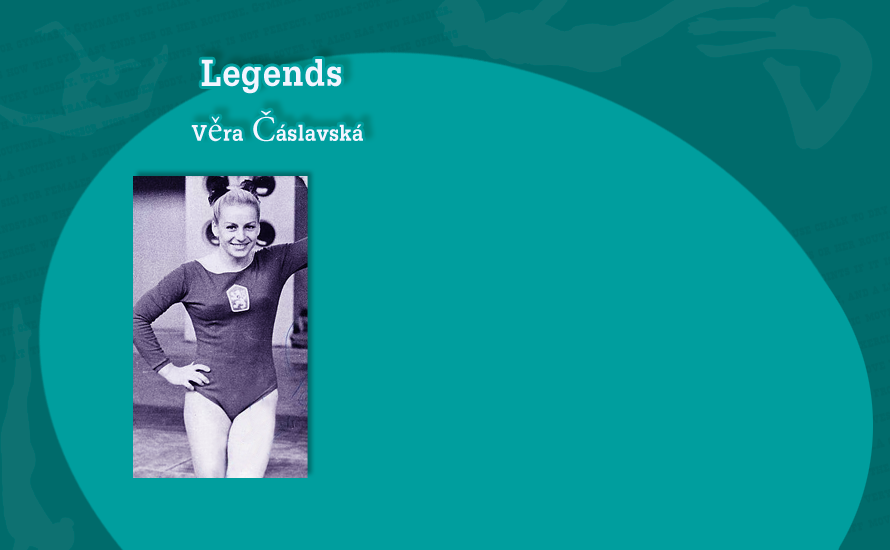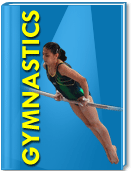Gymnastics
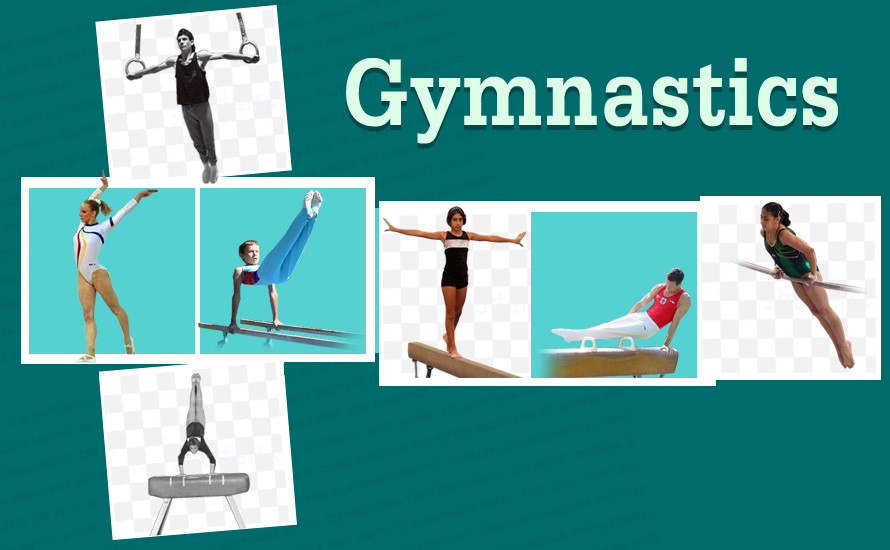
Gymnastics is a sport where athletes perform exercises and routines. Gymnasts must show how strong they are, how flexible they are, how much power their bodies have, how balanced they are, how coordinated they are, and how gracefully they can move.
What is physical strength? Gymnasts must have a strong body and strong muscles to perform gymnastics.
What is flexibility? Gymnasts must be able to move the body in a variety of ways.
What is power? Gymnasts are strong enough to complete a gymnastic move.
What is agility? Gymnasts can move quickly and easily.
What is coordination? Gymnasts can move smoothly and show good timing of their moves.
What is balance? Gymnasts must control their bodies and their weight so they do not fall.

The banana - it can do splits.
Women perform routines on the uneven bars, the balance beam, the floor, and the vault.
Men perform floor exercises, as well as routines on the pommel horse, the still rings, the vault, the parallel bars, and the high bar.
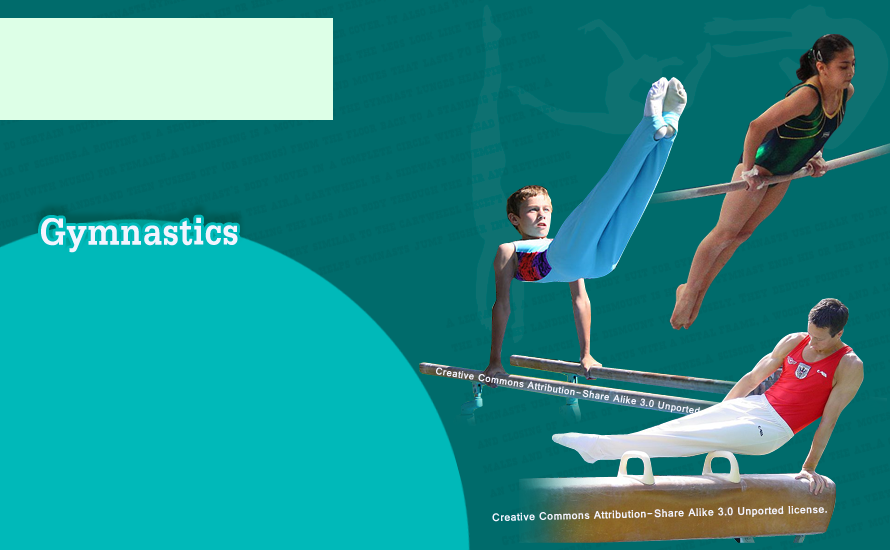
In 2001, the vaulting horse changed. The new equipment was a tongue or table. It was wider, longer, so it was also safer for gymnasts. Gymnasts could try more challenging or advanced vaults.
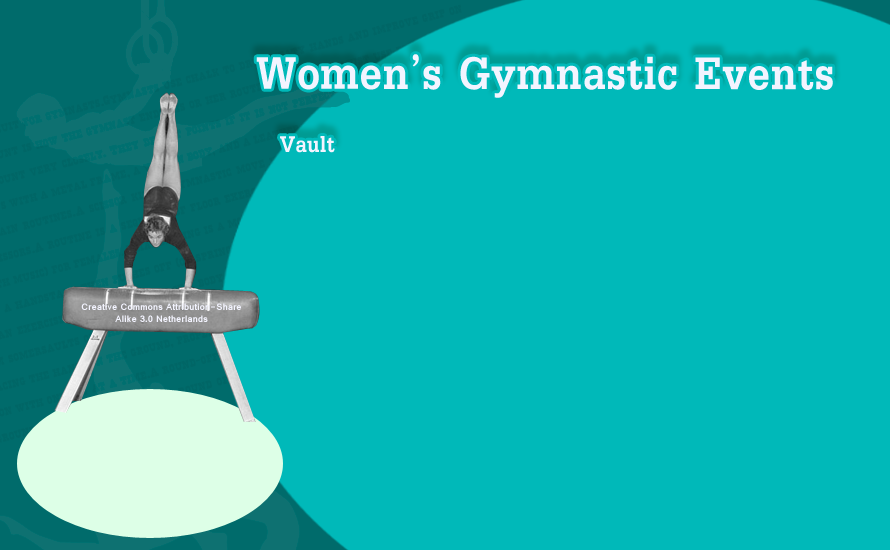
Somersault.
The uneven bars are two horizontal bars where one bar is higher than the other bar. Gymnasts use a springboard or a small mat to get up on the bars.
The gymnast performs a routine that includes different moves like swinging and circling. The gymnast does many moves. They can move over or under the bars, and they can swing between the uneven bars. The gymnast does a final trick and dismounts on to the mat.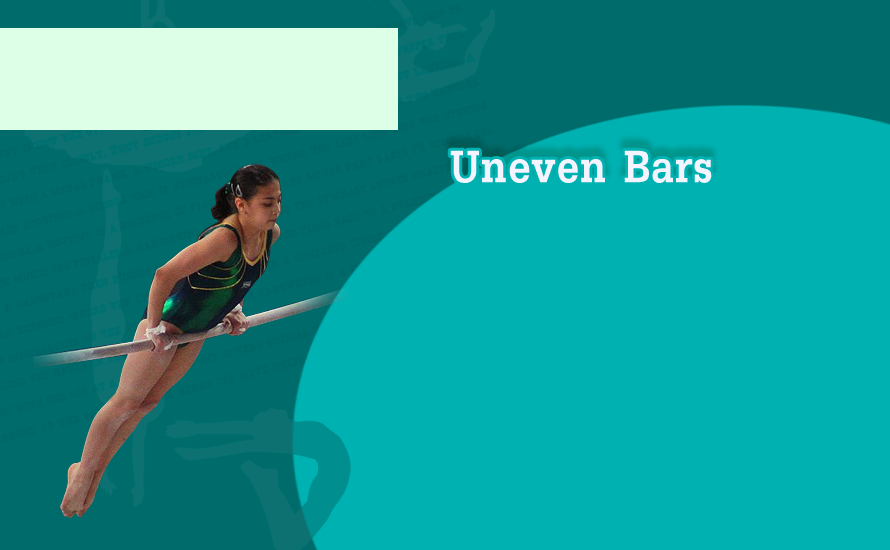
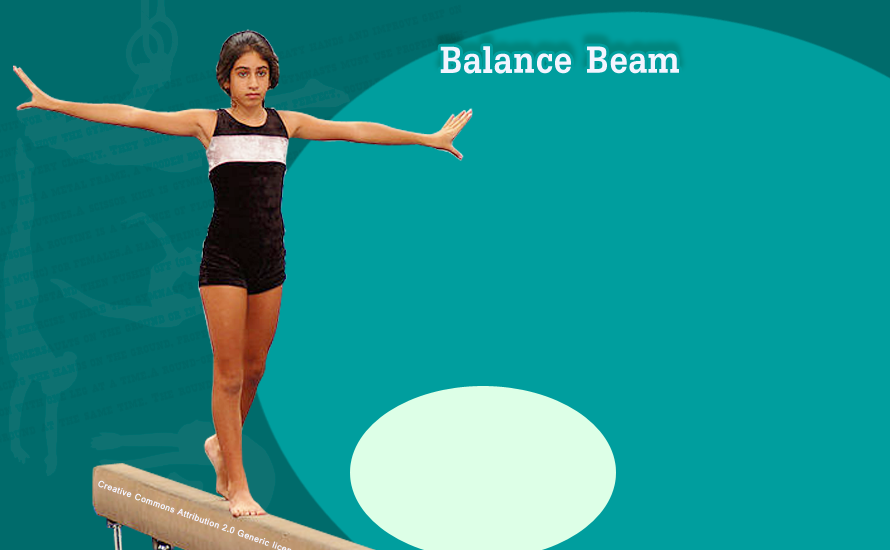
Round off!
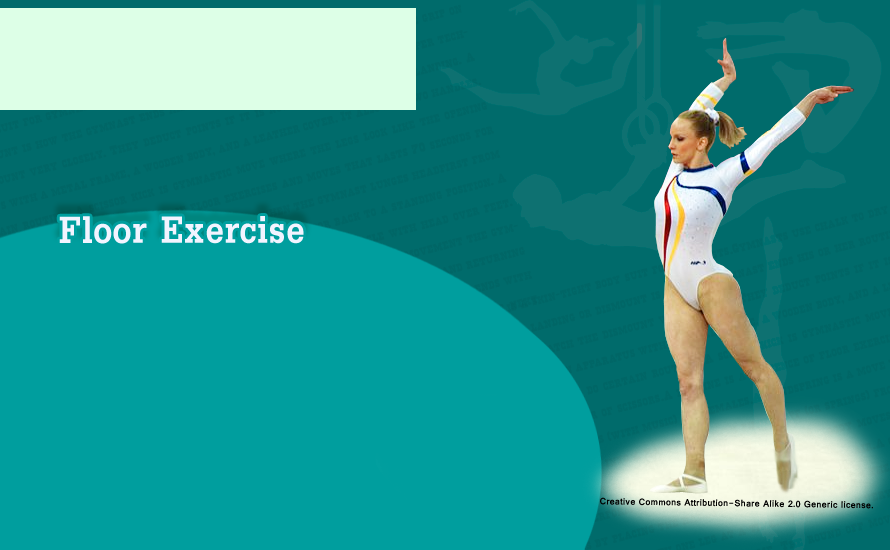
1. How difficult the moves are
2. If the gymnast completes the moves
Judges can deduct points for execution (the gymnast's ability to complete the skills) and artistry (the quality of the choreography).
The total score is the 10.0 score minus deductions.

Men's floor routines are very similar to women’s floor routines. Men have four turns that are just over one minute long. Men perform without music. While they perform, male gymnasts have to touch all four corners on the carpeted floor area.
A gymnast can perform a routine on a pommel horse that has handles. They can do moves that require two legs or just one leg. Leg movements with just one leg are often called scissors. The gymnast can swing his legs in different ways and does several moves on the horse. Then the gymnast dismounts the horse to complete the routine.

The still rings hang from the ceiling so they are above the floor. The gymnast can hang and perform his routine. He must show balance, strength, power, and movement while keeping the rings as still as possible. The gymnast must do one move that shows strength while his body remains as still as possible. The routine ends with a dismount.
The vault activity includes a runway that is 25 meters long. The gymnast runs as fast as possible then jumps onto a springboard to spring onto the vault. To complete a good vault, the gymnast must have a good sprint speed and approach, a long jump, and the strength to move the body in a perfect rotation. The gymnast must also have a perfect dismount.
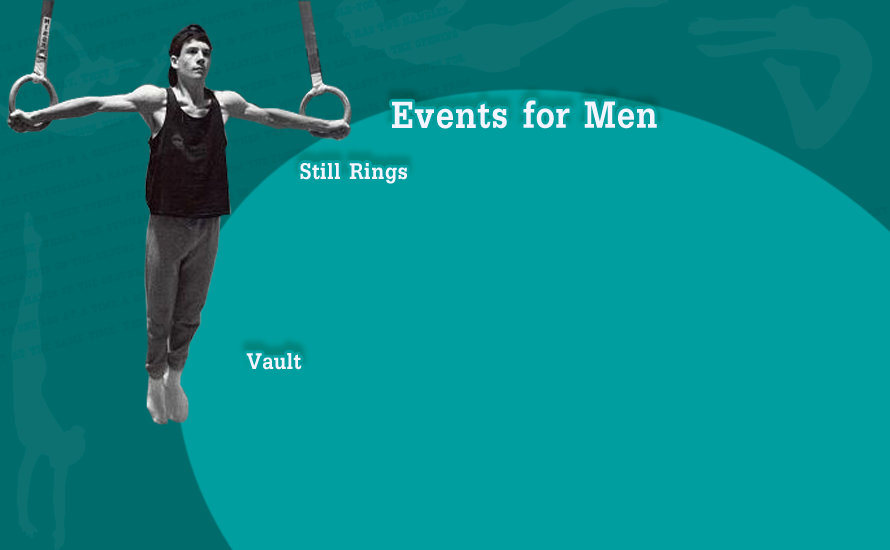
The parallel bars are two bars that are about as wide as a gymnast’s shoulders. The gymnast holds the bars and performs a routine. He must have upper body strength. He must also show good coordination. The routine can include different moves like swinging the legs, balancing on one hand, flips, and so on. It ends with a dismount.
A high bar is made of steel or fiberglass. It hangs above a mat. The gymnast holds onto the high bar and performs his routine. He can swing, twist, turn, flip, release from the bar and grab it again, and so on. As they swing, gymnasts gain momentum that helps them to spin faster. They complete their routine with a dismount onto the mat.
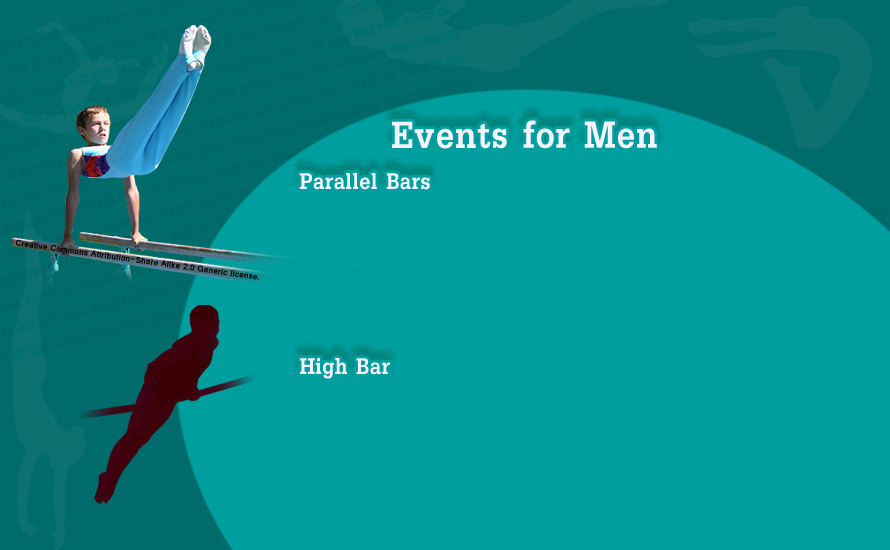
Judges score the male gymnasts for each event. They receive a score for how well they perform, how difficult their routine is, and how they show their skills.
A leotard is a skin-tight body suit for gymnasts.
Gymnasts use chalk to dry sweaty hands and improve grip on the bars.
The landing or dismount is how the gymnast ends his or her routine. Gymnasts must use proper technique. Judges watch the dismount very closely. They deduct points if it is not perfect, double-foot landing.
A pommel horse is an apparatus with a metal frame, a wooden body, and a leather cover. It also has two handles. Gymnasts use it to do certain routines.

A scissor kick is gymnastic move where the legs look like the opening and closing of a pair of scissors.
A routine is a sequence of floor exercises and moves that lasts 70 seconds for males and 90 seconds (with music) for females.
A handspring is a move when the gymnast lunges headfirst from an upright position into a handstand then pushes off (or springs) from the floor back to a standing position.
A somersault or roll is an exercise where the gymnast’s body moves in a complete circle with head over feet. Gymnasts can perform somersaults on the ground or in the air.

A cartwheel is a sideways movement the gymnast performs by placing the hands on the ground, propelling the legs and body through the air and returning to a standing position with one leg at a time.
A round-off is very similar to the cartwheel except it ends with both feet on the ground at the same time. The round-off move helps gymnasts jump higher into their next move.

Gymnastics began in ancient Greece. People were encouraged to combine exercise with fun. They used a gym for jumping, running, and wrestling, stretching exercises, and warm-ups.
In the 1700s, in Germany, educators created exercises for boys and young men.
1896 - Men's gymnastics competition was included in the first "modern" Olympic Games.

1800s - Gymnastics began as a competitive sport about 100 years ago.
1830s - Gymnastics began in the United States in the schools.
1881 - The International Gymnastics Federation formed in 1881. This change made it so that gymnasts could compete in different countries.
1896 - Gymnasts first met in international competition during the 1896 Olympics. Five countries participated. Germany won many medals. Events included men’s horizontal bar, parallel bars, pommel horse, rings, and vault.

1903 - Belgium hosted the First International Gymnastics Competition outside of the Olympics.
1924 - Paris hosted the Olympic Games. Events combined individual and team exercises.
1928 - Women could compete in Olympic gymnastics. The first women’s event was the team, combined exercise.
1936 - U.S. women first competed in the Olympic Games in Berlin, Germany.

1954 - Gymnastics events became standardized.
1970 - USA Gymnastics became the national governing body of the sport in the United States.
1976 - Nadia Comăneci (from Romania) received the first perfect score at the Summer Olympics in Canada. She scored four perfect tens on the uneven bars, two on the balance beam, and one in the floor exercise.
2006 – Gymnasts followed a new points system for Artistic gymnastics. There was a difficulty score and a score for execution (how well the skills are performed).

Country represented: Japan
Born: October 11, 1946

Born: October 14, 1952, Vladimir, Russia
Died: March 21, 2011, Russia

Born: March 28, 1958, Chicago, Illinois, United States
Height: 1.65 m
Spouse: Nadia Comaneci (m. 1996)
Children: Dylan Paul Conner

Born: December 27, 1934, Kherson, Ukraine
Height: 1.60 m
Weight: 52 kg
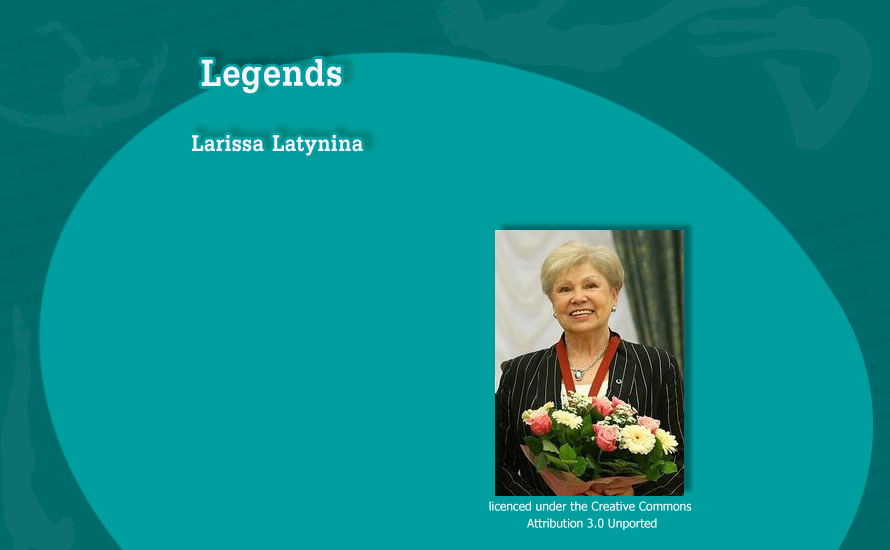
Born: November 12, 1961, Onesti, Romania
Height: 1.62 m
Spouse: Bart Conner (m. 1996)

Born: May 3, 1942
Prague, Czech Republic
Spouse: Josef Odlozil (m. 1968-1987)
Children: Martin Odlozil, Radka Čáslavská
Věra Čáslavská is a Czechoslovakian gymnast. In her career, she won 22 International titles. She participated in 3 Olympic games. She is a member of International Gymnastics Hall of Fame.